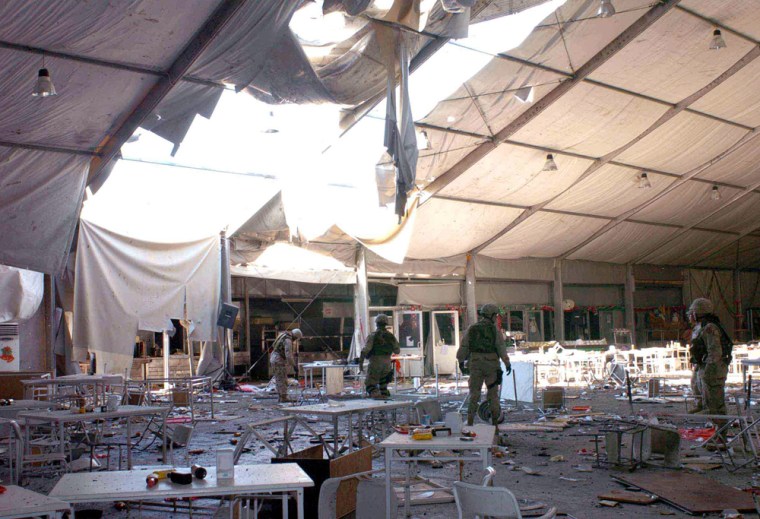A member of the Iraqi insurgent group Ansar al-Sunnah was wearing an Iraqi security forces uniform when he sneaked into a mess tent at a U.S. base near Mosul last December and blew himself up, leaving 22 people dead, a U.S. general said Friday.
Maj. Gen. David Rodriguez, who commands U.S. troops in northern Iraq, told reporters that the bomber was not a worker at the base, as some had suspected, and didn’t appear to have gotten inside the base by entering through a gate.
The bomber’s nationality is unknown, Rodriguez said, speaking to reporters at the Pentagon via video teleconference. It is also not known whether he was a member of the Iraqi security forces or was wearing a stolen or counterfeit uniform.
“It’s a large perimeter (on the base), and we think that he was somehow able to infiltrate through the perimeter, not going through an official gate,” Rodriguez said, citing a U.S. military investigation into the attack. The results of the investigation had not previously been made public.
Deadly attack
The bombing, at Forward Operating Base Marez, was the deadliest single attack since the U.S.-led invasion of Iraq in March 2003.
On Dec. 21, the bomber entered a crowded mess tent during lunch and blew up. Fourteen U.S. military personnel, four American civilians and three Iraqi soldiers were among the dead. The 22nd person was identified only as a non-U.S. person; officials have never said whether they believe he was the suicide bomber.
Seventy-five more were wounded. Ansar al-Sunnah, a homegrown Iraqi militant Islamic group, took responsibility for the attack.
The group identified the bomber as Abu Omar of Mosul, a nom de guerre that suggests he was an Iraqi. The group claimed that the bomber slipped into the base through a hole in the fence during a guard change.
An Arab news outlet last January said the bomber was 20-year-old Ahmed Said Ahmed al-Ghamdi, a Saudi medical student.
Rodriguez said that most suicide bombers in Iraq are from outside the country.
He also said U.S. and Iraqi forces have captured several Ansar al-Sunnah leaders in recent months.
“It is a lethal insurgency force that has been trying to tear down the future of Iraq,” he said.
